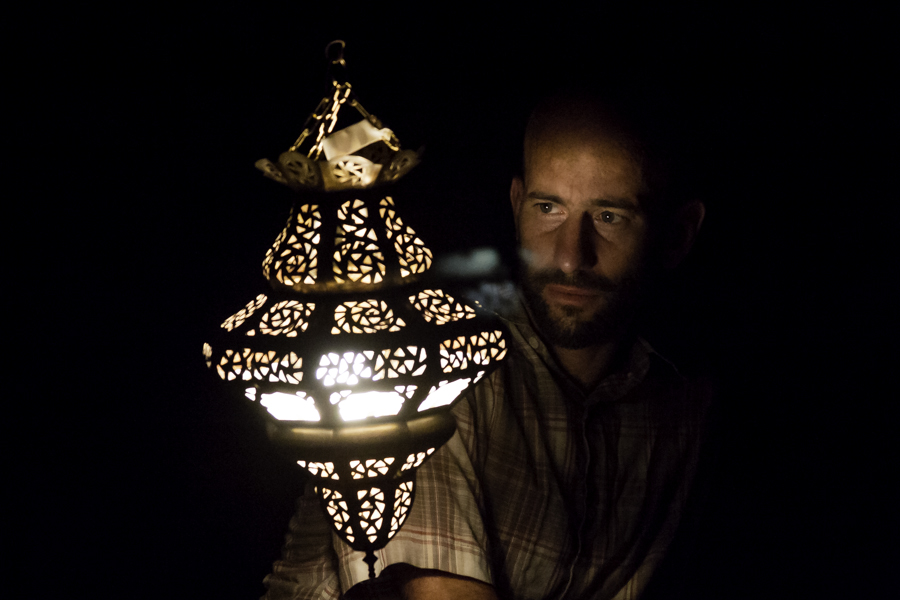The trunk was in the middle of the empty Loyola Chapel, sitting atop three lightboxes tipped on their sides. The trunk had belonged to a World War II veteran, whose son was now about to open it.
Audience members were invited to go in, wander around or sit down, and generally feel free to get involved in the performance, which consisted of three cycles. It was unclear upon walking in who exactly was audience and who was performer, and this was just one of the ambiguities that was exploited in last week’s production of TRUNK: oscillator, the latest piece by Craning Neck Theatre, a Toronto-based company.
The most ambiguous part of the show came with the setup of the whole production. It was unclear what it was exactly that I had walked into. As Jeremy Waller, director and principal creator, explained in the program, “TRUNK is a play. It is a menagerie. It is an installation. It is a porous glass case for people to enter, reflect, and hopefully act – with and against.”
I sat down with a beer on one of the chapel pews strewn around the edges of the room to find out exactly what was going on.
Voice-overs in the first cycle set the scene: an Anglican minister emigrated to Canada and fell in love with another woman while his wife, suffering from mental illness, was sent off to a convent. In the darkness of the room, you could feel the unease. It was unclear how exactly the story was going to unfold, or even if it would be shown at all.
Near the trunk, a bicycle was lying in the middle of the floor, and it occurred to me that there was nothing to stop me from walking up to it and giving it a ride around. Other audience members would have no idea whether or not what I was doing was “part of the production.”
Eventually, one of the performers (the son of the Anglican minister) did ride the bicycle, and I sat there, feeling glad that I hadn’t, because it was pretty dark in the room. The father soon removed his son from the bike to avoid any accidents.
Another significant portion of this tapestry was the three-piece band ominously set up on the chapel stage. For TRUNK’s first cycle, the band restricted itself to contributing to the ambience of the room, but by the second cycle the show really kicked off as the musicians broke into song. This was a powerful climax to the cycle, and the son was soon on stage, topless and playing air guitar while across the chapel another performer started screaming “Let it out” into a microphone.
These were perhaps among the easier moments for an audience member to keep track of; however, when action moved across the hall and into a side corridor it became unclear where performance ended and audiences began.
Waller explained that this confusion is representative of what the company sets out to do in their productions. He described the venue at Loyola Chapel as an opportunity for an “intimate show in a big space.” Indeed, the one obstacle that the company has to deal with is keeping all the various threads of the performance playing out across the hall in some coherent whole that the audience can follow. According to Waller, this is part of their mission to keep the audience “on their toes.”
Craning Neck Theatre’s performance was certainly intended to have an overarching narrative, as the program notes explain. With a story taken from the director’s family, TRUNK was ambitious, striving to take the audience on a deliberately disorienting ride while still trying to hold some form of narrative.
While the performance I watched was hampered by a smaller and more passive audience, this kind of theatrical performance art has the potential to go deeper through its interactive quality. Sadly, this particular performance had set itself a few too many challenges, leaving the audience highly disengaged.
